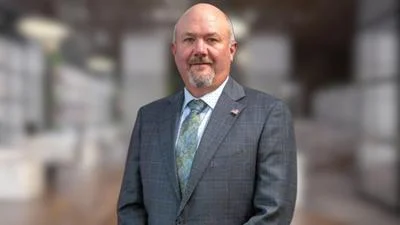The Congressional Record is a unique source of public documentation. It started in 1873, documenting nearly all the major and minor policies being discussed and debated.
“THE TRANSPORTATION INFRASTRUCTURE CREDIT ACT OF 1997” mentioning the U.S. Dept. of Transportation was published in the Extensions of Remarks section on pages E1617 on Aug. 1, 1997.
The publication is reproduced in full below:
THE TRANSPORTATION INFRASTRUCTURE CREDIT ACT OF 1997
______
HON. ROSA L. DeLAURO
of connecticut
in the house of representatives
Thursday, July 31, 1997
Ms. DeLAURO. Mr. Speaker, today I introduced the Transportation Infrastructure Credit Act of 1997. This bill will create public-private partnerships to build more highway and mass transit projects, and create tens of thousands of new jobs. I am pleased to be joined by my colleagues, Representatives Bonior, Frost, Olver, Green, Kennedy of Rhode Island, McGovern, and Delegate Christian-Green in offering this important proposal.
The House of Representatives recently voted to reject, by a vote of 214 to 216, a $12-billion, 5-year increase in funding for highway and mass transit projects above the current $125 billion budget proposal. Like many of my colleagues who supported this modest increase in transportation construction funds, I was disappointed by the House's failure to agree to these additional moneys.
Our Nation needs additional capital to meet the more than $30 billion annual shortfall in funds to construct highway and mass transit projects. The Government must encourage private infrastructure investment to match overseas investments. In Asia, 10 to 15 percent of all infrastructure is privately owned. However, in the U.S., less than 1 percent of transportation infrastructure is privately owned. The Transportation Infrastructure Credit Act encourages private sector development, ownership, and financing of our Nation's infrastructure needs.
This bill is needed because there is no compatible financing mechanism available for large projects that exceed $100 million. Unlike State Infrastructure Banks created by the ISTEA bill, this bill will give the U.S. Department of Transportation the capacity to make loans immediately to large State and interstate infrastructure projects.
The Transportation Infrastructure Credit Act offers an innovative approach to addressing this financing shortfall. It proposes spending
$500 million in Federal funds over 5 years to leverage $10 billion in private capital investments in transportation infrastructure. The legislation authorizes $100 million annually in credit incentives for 5 years. These funds would be administered by the U.S. Department of Transportation [DOT], which would offer four financing products that would attract private investments in highway and mass transit projects.
Public-private partnerships created through the Transportation Infrastructure Investment Act can leverage $2 billion in actual construction for every $100 million invested by the Federal Government. Each $1 billion invested in infrastructure creates between 20,000 and 30,000 jobs. This means that the bill can create as many as 300,000 new jobs on top of those created by traditional ISTEA funding.
These four financing mechanisms are particularly attractive to project sponsors interested in financing projects with dedicated, user-
fee based revenue streams, such as tolls (for highways) or user fees
(for mass transit). For this reason, most projects financed through this bill would be commercially owned.
I would like to take a moment to explain each of the four financing mechanisms, or ``products,'' contained in this proposal that would be offered the Department of Transportation (DOT).
Direct loans, the first product, would be subordinated or junior loans that would typically be used to finance about one-third of the cost of a project. The remaining two-thirds of the cost of a project would be provided by private sources (such as loans and municipal bonds). The large private interest will ensure that projects are chosen carefully. The Department of Transportation used this type of loan for the Alameda Corridor project in California.
Under this bill, DOT would also offer stand-by lines of credit. DOT would provide two different forms of this type of credit: partial credit enhancement and a guarantee for the debt service on project debt. Stand-by lines of credit help investors by ensuring that debt is covered during the ramp-up period--the period during which the project is being constructed, but there is no revenue stream such as tolls to repay investors.
The third product can be referred to as insured loans. DOT would be able to provide highly restricted insured loans, which are also called guaranteed loans. These insured loans would cover 100 percent of the principal and interest on the federal portion of the project debt, and only that portion of the debt.
The final product DOT could offer is called development cost loans. This financial product, which is also called risk insurance or speculative loans, would absorb the preliminary costs of projects such as pre-construction costs, preliminary engineering, and environmental impact studies.
Because of limitations on the use of these financial products, the risk to the Department of Transportation is limited. At the same time, use of these mechanisms allows projects to move forward with private sector construction financing.
The total cost of this bill is $500 million over a 5-year period. This $100 million a year would support $2 billion in loans and project insurance each year for 5 years for a total of $10 billion. This proposal is consistent with the goals of the Intermodal Surface Transportation Efficiency Act [ISTEA] reauthorization, and would increase overall highway and mass transit spending.
The legislation also contains a mechanism to back the $100-million-a-
year cost of the loans. By using a fraction of the unobligated balances of the Highway Trust Fund--an amount that has reached approximately $10 billion, we can support the budget authority created by this bill. States have been arguing that they should be able to put their unobligated transportation balances toward transportation projects, and this bill creates an exceptional opportunity to use these funds for building highway and mass transit projects.
In light of the limited funding budgeted for the ISTEA reauthorization, this bill makes sense. It is cost effective, it builds public-private partnerships, it creates jobs, and it ensures that highway and mass transit projects are built to serve the public good. I urge my colleagues to join in cosponsoring this important bill.
____________________








